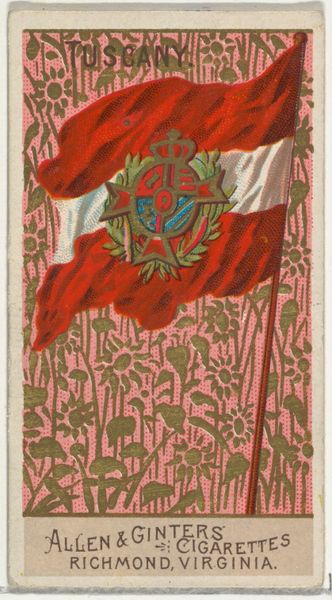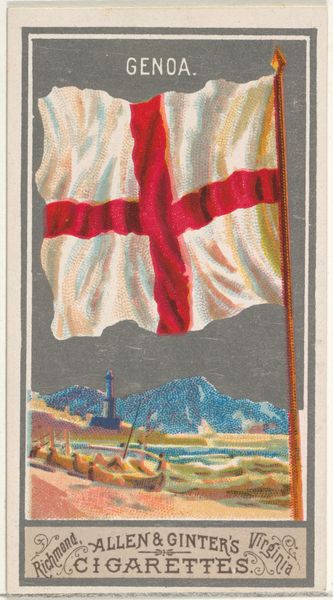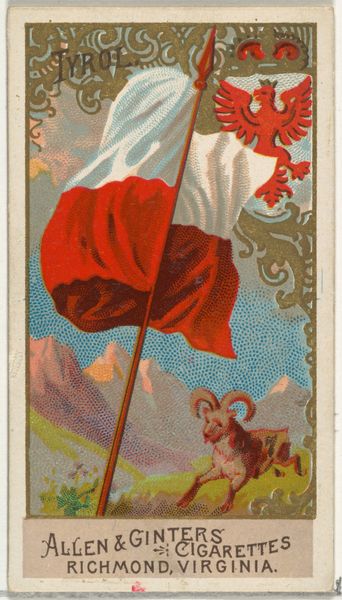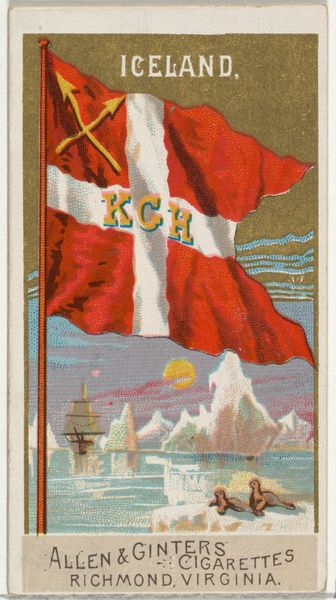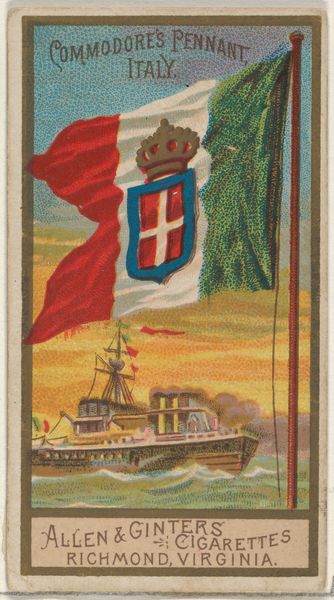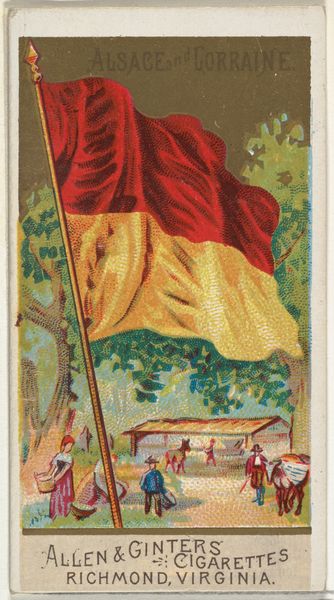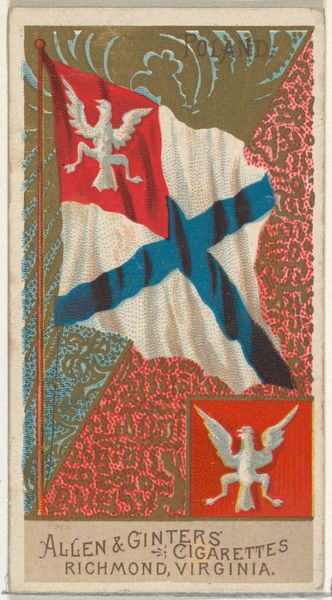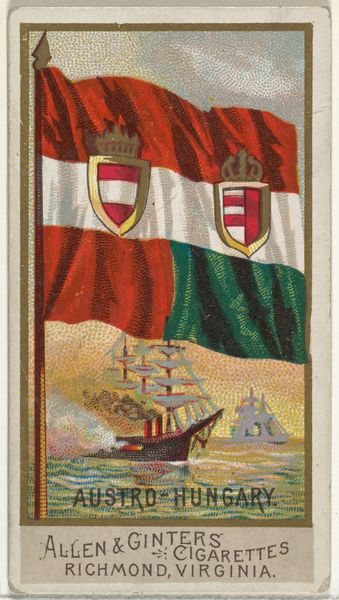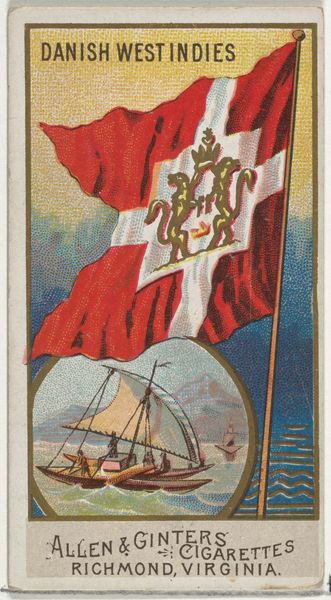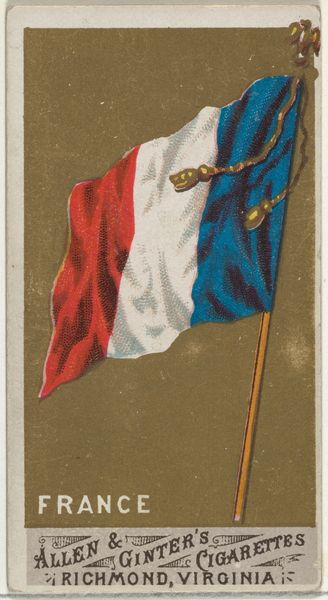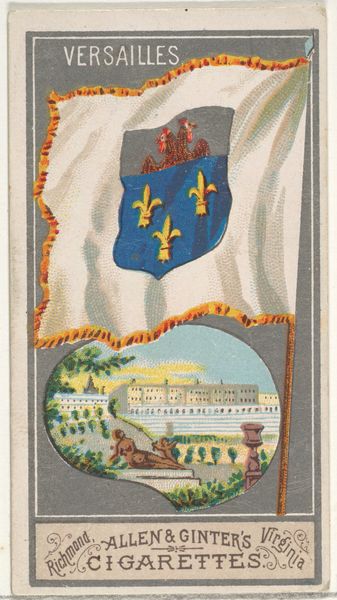
Switzerland, from Flags of All Nations, Series 1 (N9) for Allen & Ginter Cigarettes Brands 1887
0:00
0:00
Dimensions: Sheet: 2 3/4 x 1 1/2 in. (7 x 3.8 cm)
Copyright: Public Domain
Curator: What a striking little piece! I’m immediately drawn to the bold simplicity of the Swiss flag against that idyllic landscape. Editor: And that’s exactly the point! This chromolithograph comes from a series of cards inserted into Allen & Ginter cigarette packs in 1887. The series, entitled “Flags of All Nations,” was designed to promote the brand and, I would argue, also to subtly cultivate a sense of global awareness, albeit tied to consumerism. Curator: Ah, yes, a collectible! Knowing it was produced for a cigarette brand definitely changes the read for me. Suddenly the romance of the alpine vista seems almost… ironic? It's an odd pairing, to be sure. But, let's consider the symbolic elements beyond that immediately recognized Swiss flag with its potent religious and neutrality associations: the delicate wildflowers blooming in the foreground? And the snow-capped mountains far in the distance. What meanings do those invoke? Editor: I see those blooms, particularly with their traditional associations of purity and rebirth, functioning on the same semiotic plane as that brilliant red-and-white flag: a statement of strength rising from the land. Don't you agree that the mountain range also becomes more than mere scenery, acting almost as a metaphor for resilience and timelessness? All working to root that symbolic flag. Curator: A strong point, and those kinds of dual meanings are precisely how flags operated as visual symbols, projecting both local specificity and claims to universality in the late 19th century. Cigarette companies helped normalize flags' political work. I think what the image highlights is the political role and the cultural currency that flags, and by extension nation-states, occupied at this historical moment. Editor: So it all seems quite deliberately staged and employed: each component in service to that grand narrative the producers are shaping. Now, that commercial imperative and underlying intention almost adds a further complex layer to this artwork when one appreciates that these tiny images circulated on a mass scale at the time…! Curator: Right. That mass distribution transforms it. Not just an aesthetic object anymore, but part of a broader social and economic landscape. Looking at it again with that in mind, it almost reveals as much about American aspirations and anxieties as it does about Switzerland. Editor: Well, I'll look at cigarette cards a little differently from now on. Thanks for untangling this particular little narrative with me. Curator: Likewise, I’ll keep an eye out for what imagery corporations try to make culturally valuable, going forward!
Comments
No comments
Be the first to comment and join the conversation on the ultimate creative platform.
